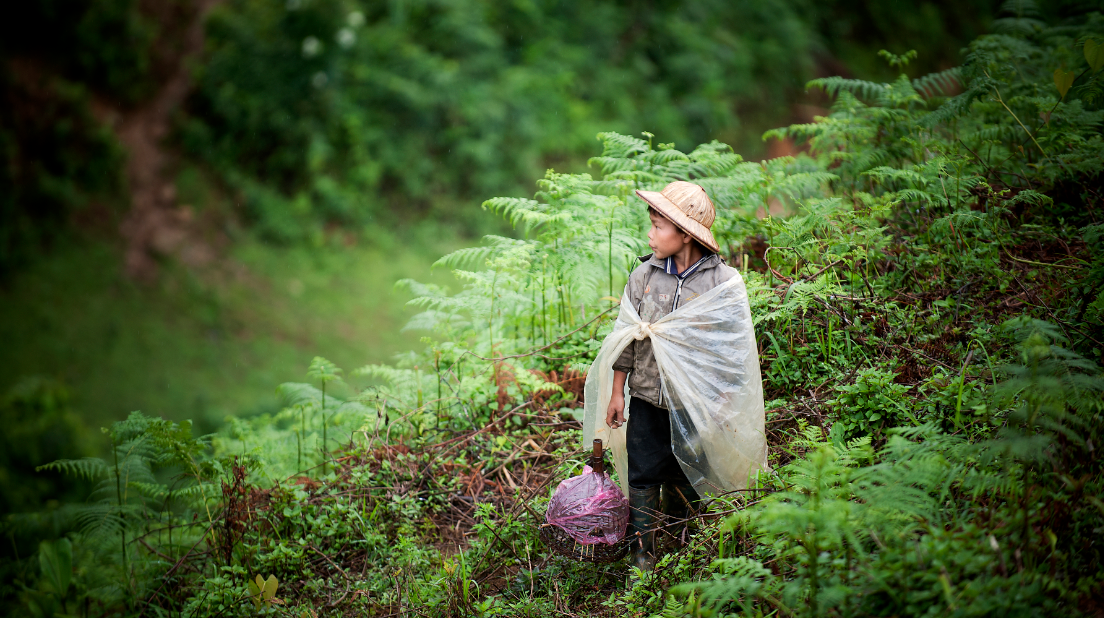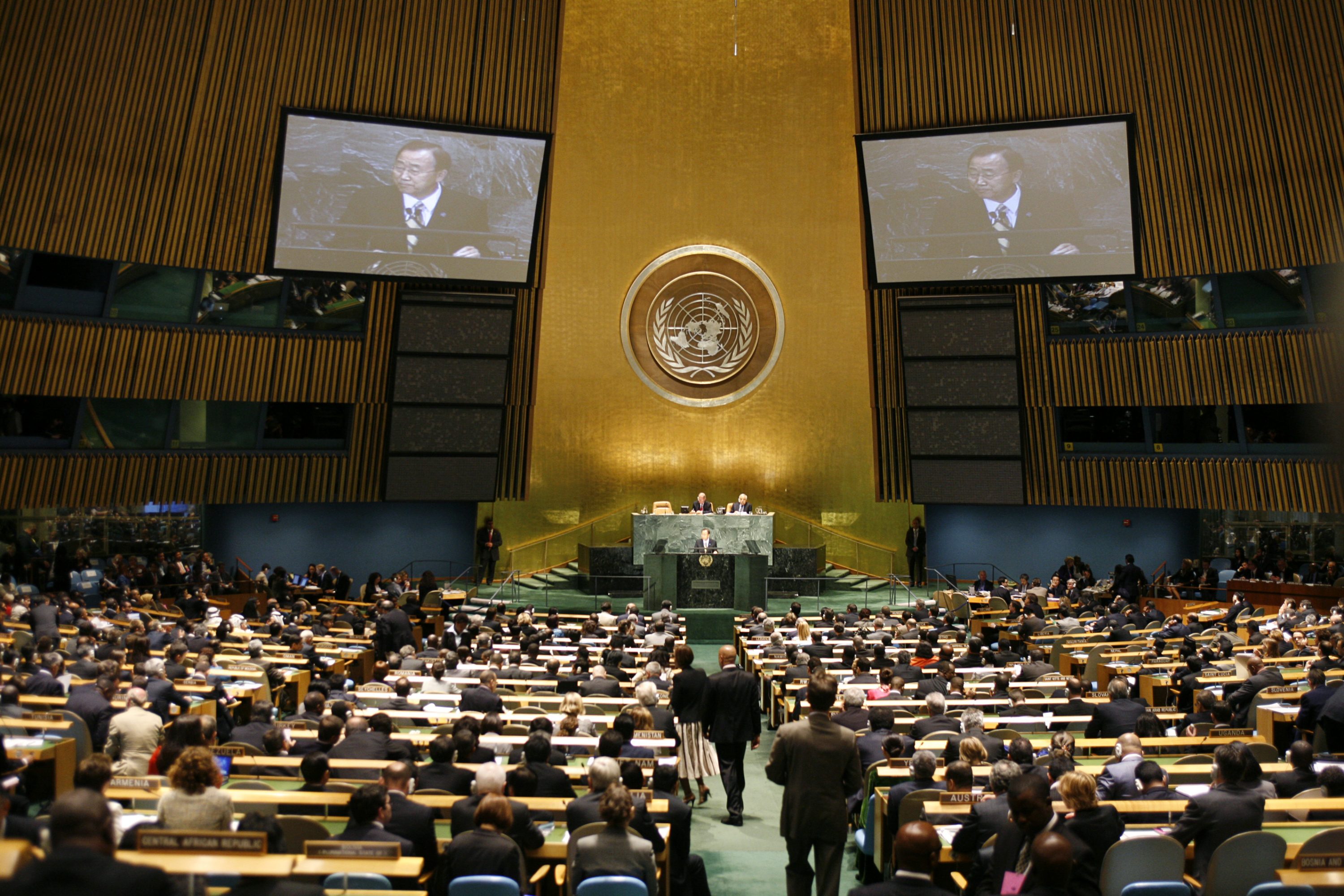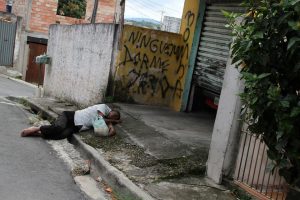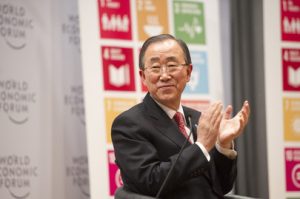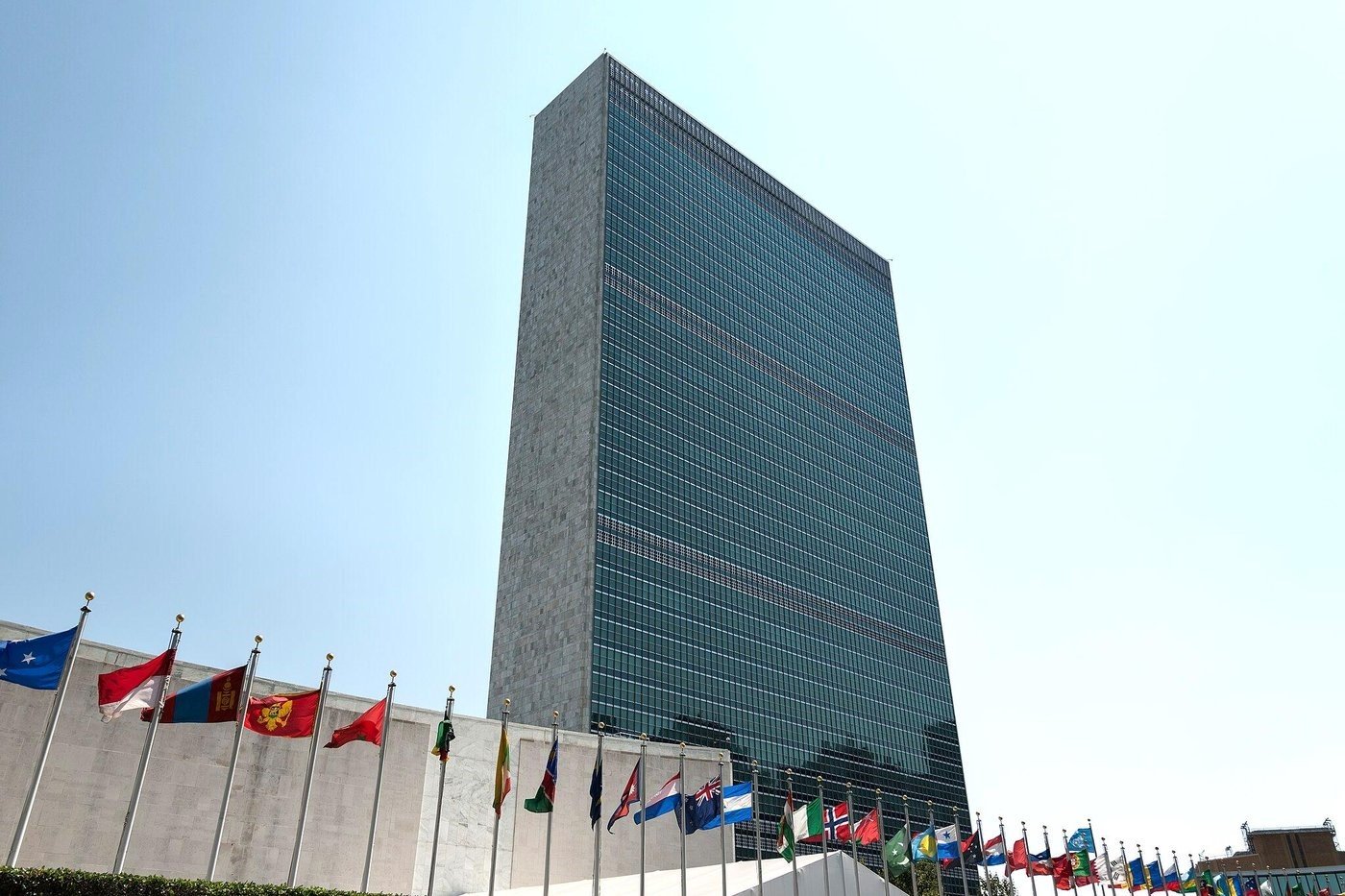EDITOR’S NOTE: THIS PIECE IS AUTHORED BY, Jan Vandemoortele, UN Resident and Humanitarian Coordinator to Pakistan from 2005-08, and he was Director of the Poverty Group at UNDP in New York from 2001-05. THIS PIECE IS PART OF A SERIES EXPLORING THE SUSTAINABLE DEVELOPMENT GOALS. SEE THE INTRODUCTION TO THE SERIES HERE.
Millennium Development Goals
In September 2000, the UN member states adopted the “Millennium Declaration.” A year later the MDGs were established. The main reason for doing so was to avoid that the declaration would fall into obscurity and oblivion, as the previous declarations of the 1990s had done. A declaration issued by a world summit has a short shelf life of only a few months. Once the 2000 declaration started to fade away, we convened a group of experts from across the UN system to select specific targets verbatim from the Millennium Declaration and placed them in a stand-alone list—grouped under general headings (goals) and supplemented by appropriate indicators for global monitoring. The original list comprised eight goals, 18 targets and 48 indicators. It was attached to a report about the follow-up to the Millennium Declaration that was submitted to the UN General Assembly in late 2001. The annex carried the heading “Millennium Development Goals.”
Almost immediately, the MDGs came under severe criticism. Stakeholders and analysts identified fundamental weaknesses and intrinsic limitations. Some spoke of “flawed targetism.” Saith warned that they carried “the potential for distorting meaningful intellectual and research agendas.” Fischer observed that the MDGs “encourage an over-inflated sense of self-importance among international donors.” Three critics were particularly harsh. Antrobus re-coined the acronym to mean “Most Distracting Gimmick” whilst Langford dismissed them as “a bunch of words with a simple monitoring system.” Pogge went as far as qualifying the MDGs as “the largest (though not the gravest) crime against humanity ever committed.”
In The Photo: GA Plenary Meeting on the opening of the Millennium Development Goals (MDG) Summit. Integrate and coordinated implementation of and follow-up to the outcomes of the major United Nations conferences and summits in the economic, social and related fields. Follow-up to the outcome of the Millennium Summit Statement by the Secretary-General. Photo Credit: UN Photo/Rick Bajornas
The criticism was sufficiently widespread to warrant a literature review, albeit that no clear picture emerged. What appeared as a limitation to some was seen by others as a strength. Some saw the MDGs as too ambitious, others believed they were too narrow. A commonly heard critique was about the manner in which they were established—by faceless UN bureaucrats. Since they were not owned by the affected constituencies, they were perceived as lacking legitimacy. For others, it was the lack of analytical rigor behind the chosen objectives that was most troubling. Many saw them as too simplistic and driven by the availability of data, without identifying clear accountability and financing frameworks. Others cautioned against reducing development to a list of targets; potentially leading to a technocratic takeover—by techno-optimists—that would depoliticise the development debate or become a Trojan horse for the Washington Consensus. Still others warned they would reinforce vertical programmes and sectoral funding mechanisms. Another common critique was that the MDGs measured progress in terms of national averages, which obscured within-country disparities. Various observers expressed disappointment over the absence of reproductive health in the original MDGs and the inadequate coverage of gender equality and the deficient handling of environmental challenges. Several of these points were quite valid.
For a full mindmap containing additional related articles and photos, visit #SDGStories
Sustainable Development Goals
In September 2015, after lengthy discussions and arduous negotiations, and some last-minute arm-twisting by one country, the UN member states adopted the ‘2030 Agenda for Sustainable Development’, which contains the 17 SDGs. Observers have exalted them as historic, ground breaking and momentous. The fact that stakeholders spent considerable time and effort to formulate the SDGs confirms that global targets have a place. The challenge now is to keep them in their place.
From the very start, their stated aim was to establish a global agenda for development. In that sense, the SDGs cannot be considered as the sequel to the MDGs; rather they are a major reboot. It was never the intention for the MDGs to embody a broad agenda for development. Their purpose was more modest; to keep the Millennium Declaration in the spotlight. Since the realm of the SDGs is far more comprehensive than that of the MDGs, it is only normal that they need significantly more words to spell out than the original MDGs (about 5,000 vs. about 300). They also comprise considerably more targets (169 vs. 18) and require substantially more indicators to monitor (231 vs. 48). Yet, more is not necessarily better.
Items, not targets
The majority of the SDGs do not cut it as targets. This is exemplified by target 16.5 which aims to ‘Substantially reduce corruption and bribery in all their forms’. It lacks conceptual clarity, a numerical outcome and a specific deadline; which are essential elements of a valid target. The International Council for Science reviewed the SDGs and concluded that more than half of them need more work, whilst nearly a fifth was best scrapped because of their fuzziness and woolly nature. The SDGs may contain 169 items but they comprise fewer than thirty concrete targets. These are not dissimilar from the MDGs—in content as well as in ranking. They cover the same areas of poverty and hunger, child and maternal mortality, safe drinking water, education, gender equality.
Poverty, not inequality
The 2030 Agenda is based on the premise that “eradicating poverty is the greatest global challenge.” Logically, the first target is to “eradicate extreme poverty for all people everywhere, currently measured as people living on less than $1.25 a day.” Yet, numerous experts and observers argue that extreme poverty no longer constitutes the principal challenge the world is facing today. That view, they argue, is outdated because of the rise in inequality that has occurred within most countries over the past decades. The greatest global challenge is extreme inequality.
 Photo Credit: Pixabay/ Luiz Gonzaga DE SOUZA
Photo Credit: Pixabay/ Luiz Gonzaga DE SOUZA
Related Article: “MILLENNIALS AND THE SDGS“
Whilst the SDGs pay attention to inequality, they only do so nominally. The relevant target 10.1 aims to, “Progressively achieve and sustain, by 2030, income growth of the bottom 40 percent of the population at a rate higher than the national average.” But this target addresses poverty, not inequality. One cannot claim to deal with inequality by only covering the bottom 40 percent of the population. For the target to focus on inequality, it has to encompass the entire income spectrum, not just the poorest segment whilst omitting the top. Atkinson writes, “One of the themes of this book is that we need to consider the distribution as a whole.” It is perfectly possible for the bottom 40 percent to see faster income growth than the others and, at the same time, witness an increase in inequality in the country. If income transfers flow from the middle 50 percent of the population to the bottom 40 percent, whilst leaving the top 10 percent unaffected, then target 10.1 will be met but inequality will not have decreased. In other words, target 10.1 does not address inequality.
Global, not universal
It is common to hear that the SDGs represent a universal agenda, which is seen as a major achievement, for it supposedly takes the discourse beyond the artificial distinction between developing and developed countries, which was characteristic of the MDGs. However, it is incorrect to argue that the SDGs are universal in scope. They do not quite represent a “one-world” agenda that applies to all countries in a similar way.
An agenda that focuses on extreme poverty, hunger, safe drinking water, infant and maternal mortality will, evidently, not apply in the same way to poor nations as it does to rich countries. Hence, it cannot be qualified as universal. To a large extent, the concrete targets amongst the SDGs mostly relate to the developing world, especially the least developed countries. The very first target to eradicate extreme poverty does not apply at all to developed nations. Neither does the second goal, which is about ending hunger. The latter could have been formulated as a universal goal had it included obesity. The fact that the SDGs do not mention overweight or obesity is remarkable. The Global Report on Diabetes shows that the prevalence of the disease has nearly doubled since 1980; mostly driven by the unrelenting rise in overweight and obesity. Obesity is not a problem of rich countries alone. A quarter of the world’s obese children lives in Africa, a continent traditionally identified with under-nutrition. It is mindboggling that the 2030 Agenda omits one of the most pressing challenge in public health, in rich and poor countries alike.
An agenda that sidesteps universal challenges such as growing inequalities and obesity cannot claim to be universal in scope. These omissions are not due to an oversight; they are intentional. Regulating the food industry, financial sector and labour market—to address obesity and inequality—do not quite fit within the dominant economic narrative and do not rank high as priorities of most governments. Instead, the SDGs conveniently focus on ending extreme poverty and hunger.
Repetitions, not facts
In spite of the obvious fact that the SDGs are not universal and do not address inequality, numerous stakeholders and observers readily repeat such falsehoods. Why? The term “social proof” may help answer that question. When placed in an unfamiliar situation, people tend to imitate the actions of others in an attempt to behave correctly. Similarly, when faced with ambiguity, we often follow the ideas of others to conform with the dominant point of view. Although rational from the individual’s perspective, such behaviour can cause us to converge too quickly on a particular viewpoint, before scrutinising it properly—also called “groupthink.” It explains why it is so difficult for new evidence that does not conform with the orthodox view to become part of the mainstream.
Kahneman explains how this works, “A reliable way to make people believe in falsehoods is frequent repetition, because familiarity is not easily distinguished from truth.” Indeed, we easily accept as true that what sounds familiar. Statistics that are frequently repeated are also given more credence. Yet, repetition is not always the mother of knowledge. It can create “facts by repetition.” The more frequently a particular point is made, the less valid it sometimes is. This is certainly the case regarding the universal scope of the SDGs, which is mentioned nine times in the 2030 Agenda and repeated over and over again by countless stakeholders and observers.
Acronyms, not tyrannies
Institutions are often influenced by a particular orthodoxy, i.e. a set of beliefs and ideas which members accepted uncritically. Although it is not forbidden to question those ideas and beliefs, their members know that it is not proper to do so. Our critique does exactly that; it questions the orthodoxy that exists within the UN system and beyond regarding the SDGs. It argues that several of the widely held views about the 2030 Agenda are either appearances, half-truths or falsehoods. Yet, stakeholders frequently reiterated them.
Many an observer or commentator will interpret this critical view as blasphemous. Exposing the weaknesses of the SDGs is seen as unacceptable or unreasonable, even as irresponsible because it could jeopardise the precarious intergovernmental consensus they embody. Once they were adopted, any critical thinking about the far-from-perfect SDGs seems to have become out of place.
An openness to scrutinise them is lacking in many quarters; raising the spectre of the tyranny of the acronym. Such an intellectual climate is radically different from the one that prevailed when the MDGs were established. Criticism was, if not always welcomed, at least tolerated. A healthy dose of criticism prevented the MDG-acronym from becoming a tyranny, albeit that some misappropriation took place.
Today, those who are subservient to political correctness are most annoyed by such criticism. Their patterned response is to mindlessly repeat that the SDGs are transformative and universal and address inequality. They put up a vigorous defence; if they do not simply silence critical voices. The tyranny of an acronym turned into a concrete reality when the present author was invited by the Human Development Report Office at UNDP to write a blog about the SDGs, only to see it removed from the website a few days after it was uploaded. Such is the power of an orthodoxy. The blog was critical but it was far from a slugfest. It is still accessible elsewhere.
As with any orthodoxy, scrutinising the SDGs for possible flaws or questioning their basic premise is just not done. Members parrot their universality and focus on inequality as truths. But that will not make them so. Such otherworldliness only serves short-time political aims. Ignoring or denying their shortcomings will not remedy the fact that their complexity and fuzziness are making it exceedingly difficult for stakeholders at the country level to take them up. The vagueness and ambiguous language make them a tough storyline to convey to the general public, including journalists and teachers—with too many and too fuzzy competing priorities. Foremost, stakeholders must show the readiness to go beyond appearances and falsehoods about the SDGs.
 In The Photo: Secretary-General Ban Ki-Moon Photo Credit: UN Photo/Rick Bajornas
In The Photo: Secretary-General Ban Ki-Moon Photo Credit: UN Photo/Rick Bajornas
The above criticism does not mean that the SDGs have no worth. They do significantly widen the scope of the development discourse and cover important issues that were not part of the MDGs. The SDGs offer a better framework than the MDGs, but considerably more work is required to turn their potential into a practical reality. Among the several steps that must be taken, the most important one is for each and every country to select from of the global agenda those aspects that are most relevant to the local context and, if necessary, adapt them. This applies to poor and rich countries alike. Some see this as equivalent to cherry-picking and watering-down, but that danger will only occur if it is done in a non-participatory process. Therefore, it cannot be conducted solely by government, as the 2030 Agenda suggests— “Targets are defined as aspirational and global, with each government setting its own national targets guided by the global level of ambition but taking into account national circumstances.” It must involve the social partners, civil society, academics, community representatives and citizens’ assemblies. So far, intergovernmental organisations—such as the United Nations, African Union, European Union, the Arab League, etc.—have not taken affirmative steps to encourage and support their member states to select and adapt the SDGs to a manageable and practical list of priorities tailored to the domestic situation and background. Without dedicated champions, global targets often remain a dead letter.
_ _


